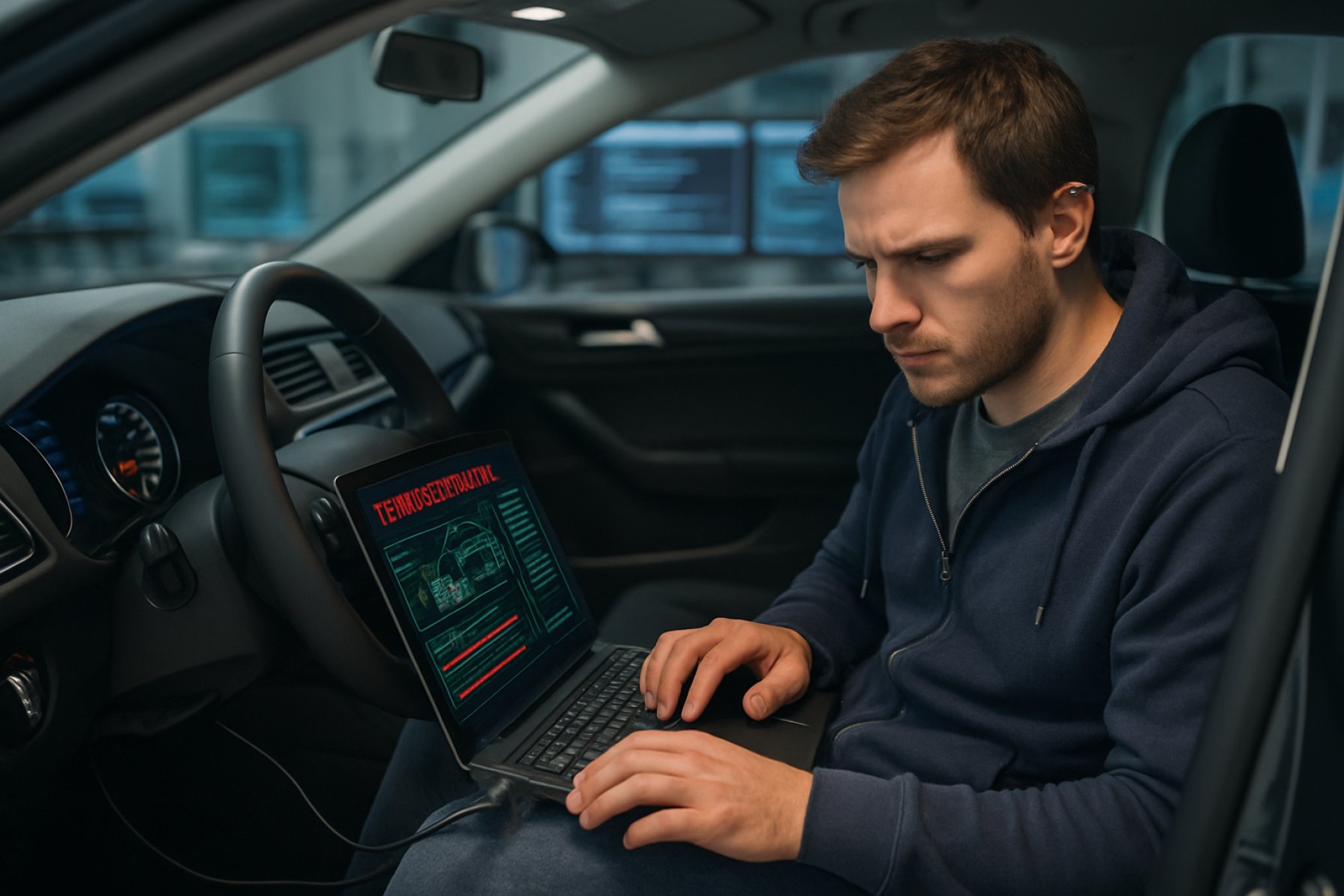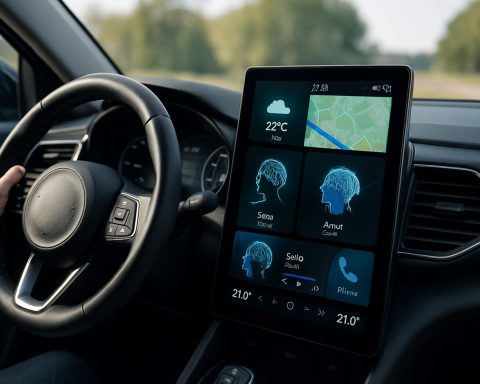Inside the World of Vehicular Hacking Simulation: How Virtual Attacks Reveal the Hidden Dangers Lurking in Modern Cars. Discover the Alarming Truths Behind Automotive Cybersecurity.
- Introduction: The Rise of Vehicular Hacking
- What Is Vehicular Hacking Simulation?
- Key Technologies and Tools Used in Simulations
- Common Vulnerabilities Uncovered in Modern Vehicles
- Real-World Case Studies: Simulated Attacks and Their Impact
- Implications for Automotive Manufacturers and Consumers
- Best Practices for Securing Connected Vehicles
- The Future of Vehicular Cybersecurity Testing
- Conclusion: Staying Ahead of the Hackers
- Sources & References
Introduction: The Rise of Vehicular Hacking
The rapid integration of digital technologies and connectivity in modern vehicles has significantly expanded the attack surface for cyber threats, giving rise to the field of vehicular hacking. As vehicles evolve into complex cyber-physical systems, equipped with advanced driver-assistance systems (ADAS), infotainment units, and vehicle-to-everything (V2X) communication, the potential for malicious exploitation has grown correspondingly. High-profile demonstrations, such as the remote compromise of a Jeep Cherokee by security researchers, have underscored the real-world risks associated with vehicular cyber vulnerabilities, prompting increased attention from both industry and regulatory bodies (National Highway Traffic Safety Administration).
Vehicular hacking simulation has emerged as a critical discipline within automotive cybersecurity, enabling researchers, manufacturers, and policymakers to proactively identify and mitigate vulnerabilities before they can be exploited in the wild. Through controlled, realistic testing environments, simulations replicate potential attack scenarios targeting vehicle networks, electronic control units (ECUs), and wireless interfaces. This approach not only aids in understanding the technical mechanisms of attacks but also supports the development of robust defense strategies and compliance with evolving security standards (International Organization for Standardization).
As the automotive industry accelerates toward greater autonomy and connectivity, the importance of vehicular hacking simulation will continue to grow. It serves as a foundational tool for safeguarding public safety, protecting consumer trust, and ensuring the resilience of next-generation transportation systems.
What Is Vehicular Hacking Simulation?
Vehicular hacking simulation refers to the practice of emulating cyberattacks on automotive systems in a controlled environment to assess vulnerabilities, test defenses, and improve the overall cybersecurity posture of vehicles. Modern vehicles are increasingly reliant on complex electronic control units (ECUs), in-vehicle networks such as CAN (Controller Area Network), and wireless interfaces like Bluetooth, Wi-Fi, and cellular connections. This connectivity exposes vehicles to a range of cyber threats, from remote code execution to unauthorized access and manipulation of critical functions such as braking, steering, or infotainment systems.
Simulations are typically conducted using specialized hardware and software platforms that replicate real-world vehicular architectures. These platforms allow security researchers and automotive engineers to model attack scenarios, such as injecting malicious CAN messages, exploiting vulnerabilities in telematics units, or intercepting wireless communications. By simulating both external and internal attack vectors, organizations can identify weaknesses before they are exploited in the wild, ensuring compliance with industry standards and regulations such as those outlined by the United Nations Economic Commission for Europe (UNECE) and the National Highway Traffic Safety Administration (NHTSA).
Vehicular hacking simulation is a critical component of the automotive cybersecurity lifecycle. It supports the development of robust intrusion detection systems, informs the design of secure communication protocols, and helps manufacturers meet the requirements of emerging cybersecurity frameworks. As vehicles become more autonomous and connected, the importance of comprehensive simulation-based testing continues to grow, safeguarding both driver safety and data privacy.
Key Technologies and Tools Used in Simulations
Vehicular hacking simulation relies on a suite of specialized technologies and tools designed to emulate real-world cyberattacks on automotive systems. Central to these simulations are hardware-in-the-loop (HIL) and software-in-the-loop (SIL) platforms, which allow researchers to test vulnerabilities in electronic control units (ECUs) and in-vehicle networks without risking actual vehicles. HIL systems, such as those provided by dSPACE, enable the integration of physical automotive components with virtual environments, offering a realistic testing ground for attack scenarios.
On the software side, open-source tools like CANape and ICS-Sim are widely used to simulate Controller Area Network (CAN) traffic and inject malicious messages. These tools facilitate the analysis of how ECUs respond to unauthorized commands, helping to identify potential security gaps. Additionally, frameworks such as can-utils and Scapy are employed for packet crafting, sniffing, and manipulation of automotive network protocols.
For more advanced simulations, digital twins and virtual testbeds, like those developed by Vector Informatik, replicate entire vehicle architectures, enabling large-scale attack simulations and the assessment of mitigation strategies. These environments often integrate with penetration testing suites such as Kali Linux, which provides a comprehensive set of cybersecurity tools tailored for automotive research. Collectively, these technologies and tools form the backbone of vehicular hacking simulation, supporting both offensive and defensive research in automotive cybersecurity.
Common Vulnerabilities Uncovered in Modern Vehicles
Vehicular hacking simulations have revealed a range of common vulnerabilities in modern vehicles, highlighting the growing risks associated with increased connectivity and software integration. One of the most prevalent issues is the insecure implementation of Controller Area Network (CAN) protocols, which often lack encryption and authentication mechanisms. This allows attackers to inject malicious messages, potentially manipulating critical vehicle functions such as braking or steering. Simulations have demonstrated that unauthorized access to the CAN bus can be achieved through exposed diagnostic ports or even remotely via telematics units and infotainment systems.
Another significant vulnerability is the inadequate isolation between infotainment systems and safety-critical components. Many vehicles allow external devices, such as smartphones or USB drives, to interface with the infotainment system, which, if compromised, can serve as a gateway to more sensitive vehicle controls. Additionally, weak or default credentials in wireless interfaces like Bluetooth and Wi-Fi have been exploited in simulated attacks, enabling remote access to vehicle networks.
Over-the-air (OTA) update mechanisms, designed to enhance vehicle functionality and security, can themselves become attack vectors if not properly secured. Simulations have shown that insufficient validation of update packages or insecure communication channels can allow attackers to deploy malicious firmware. Furthermore, the lack of timely security patches and updates leaves vehicles exposed to known vulnerabilities for extended periods.
These findings underscore the urgent need for robust cybersecurity measures in automotive design and maintenance, as highlighted by organizations such as the National Highway Traffic Safety Administration and the European Union Agency for Cybersecurity. Addressing these vulnerabilities is critical to ensuring the safety and reliability of increasingly connected vehicles.
Real-World Case Studies: Simulated Attacks and Their Impact
Real-world case studies of vehicular hacking simulations provide critical insights into the vulnerabilities of modern automotive systems and the potential consequences of cyberattacks. One of the most widely cited examples is the 2015 remote hack of a Jeep Cherokee, where security researchers Charlie Miller and Chris Valasek exploited vulnerabilities in the vehicle’s Uconnect infotainment system. By simulating a remote attack, they were able to manipulate the vehicle’s steering, brakes, and transmission, ultimately forcing the car off the road. This demonstration prompted National Highway Traffic Safety Administration (NHTSA) and Fiat Chrysler Automobiles to recall 1.4 million vehicles, highlighting the real-world impact of simulated attacks on industry practices and regulatory responses.
Another significant case involved researchers from Tesla and Keen Security Lab, who conducted a series of controlled hacking simulations on Tesla Model S vehicles. Their work demonstrated the ability to remotely control braking, door locks, and dashboard displays, leading Tesla to issue over-the-air security updates. These simulations not only exposed critical vulnerabilities but also showcased the importance of rapid patch deployment in connected vehicles.
Such case studies underscore the necessity of proactive security testing and simulation in the automotive industry. They have led to increased collaboration between automakers, cybersecurity researchers, and regulatory bodies, fostering the development of more robust security frameworks and incident response protocols. Ultimately, simulated attacks serve as a catalyst for improving vehicular cybersecurity and protecting public safety.
Implications for Automotive Manufacturers and Consumers
Vehicular hacking simulation has significant implications for both automotive manufacturers and consumers, shaping the future of vehicle security and trust in connected mobility. For manufacturers, these simulations serve as a proactive tool to identify vulnerabilities in vehicle electronic control units (ECUs), infotainment systems, and communication protocols before they can be exploited in real-world attacks. By integrating hacking simulations into the development lifecycle, manufacturers can comply with evolving regulatory standards such as the UNECE WP.29 cybersecurity requirements, which mandate robust risk assessment and mitigation strategies for connected vehicles (United Nations Economic Commission for Europe). This not only reduces the risk of costly recalls and reputational damage but also fosters a culture of security-by-design within the automotive industry.
For consumers, the adoption of vehicular hacking simulation translates into enhanced safety and privacy. As vehicles become increasingly connected and autonomous, the potential attack surface expands, raising concerns about unauthorized access, data breaches, and even remote control of critical functions. Simulations help manufacturers anticipate and address these threats, providing consumers with greater confidence in the resilience of their vehicles against cyberattacks. Furthermore, transparent communication about security testing and updates can become a differentiator in the marketplace, influencing purchasing decisions and brand loyalty (National Highway Traffic Safety Administration).
Ultimately, the widespread use of vehicular hacking simulation is pivotal in bridging the gap between technological innovation and cybersecurity, ensuring that both manufacturers and consumers can navigate the evolving landscape of automotive threats with greater assurance.
Best Practices for Securing Connected Vehicles
Securing connected vehicles against cyber threats requires a proactive approach, and vehicular hacking simulation plays a crucial role in identifying vulnerabilities before malicious actors can exploit them. Best practices for securing connected vehicles through simulation begin with establishing a comprehensive threat model that considers all possible attack vectors, including wireless interfaces (Bluetooth, Wi-Fi, cellular), onboard diagnostics ports, and vehicle-to-everything (V2X) communications. Regular penetration testing, using both black-box and white-box methodologies, helps uncover weaknesses in both proprietary and third-party software components.
A layered security strategy is essential. This includes implementing robust authentication and encryption protocols for all communications, segmenting critical vehicle networks (such as separating infotainment from safety-critical systems), and ensuring secure boot and firmware update mechanisms. Simulations should mimic real-world attack scenarios, such as remote keyless entry exploits or CAN bus injection, to evaluate the effectiveness of these controls. Collaboration with external security researchers through coordinated vulnerability disclosure programs can further enhance the security posture.
Continuous monitoring and logging of vehicle network activity, both during and after simulation exercises, enable rapid detection and response to anomalous behavior. Integrating lessons learned from simulations into the vehicle development lifecycle ensures that security is not an afterthought but a core design principle. Adhering to industry standards and guidelines, such as those provided by the International Organization for Standardization (ISO/SAE 21434) and the National Highway Traffic Safety Administration (NHTSA), further strengthens defenses against evolving threats.
The Future of Vehicular Cybersecurity Testing
The future of vehicular cybersecurity testing is increasingly intertwined with advanced vehicular hacking simulation platforms. As vehicles become more connected and autonomous, the attack surface expands, necessitating robust, proactive security measures. Simulation environments allow researchers and manufacturers to replicate real-world cyberattacks on vehicular systems without endangering physical assets or public safety. These platforms can model complex in-vehicle networks, such as CAN, LIN, and Ethernet, and simulate attacks ranging from remote keyless entry exploits to manipulation of autonomous driving features.
Emerging trends point toward the integration of artificial intelligence and machine learning within simulation tools, enabling automated vulnerability discovery and adaptive attack strategies. This evolution is critical as threat actors also leverage AI to develop more sophisticated exploits. Additionally, the adoption of digital twin technology—virtual replicas of physical vehicles—enables continuous, real-time security testing throughout a vehicle’s lifecycle, from design to post-deployment updates. Regulatory bodies and industry alliances, such as the National Highway Traffic Safety Administration and United Nations Economic Commission for Europe, are increasingly emphasizing the need for standardized cybersecurity testing frameworks, which will likely drive further innovation and adoption of simulation-based approaches.
Ultimately, vehicular hacking simulation is poised to become a cornerstone of automotive cybersecurity, supporting the development of resilient vehicles capable of withstanding evolving cyber threats. As the industry moves toward greater connectivity and autonomy, continuous investment in simulation technologies will be essential to safeguard both vehicle integrity and occupant safety.
Conclusion: Staying Ahead of the Hackers
Vehicular hacking simulation is an indispensable tool in the ongoing battle to secure modern vehicles against cyber threats. As vehicles become increasingly connected and reliant on complex electronic control units (ECUs), the attack surface for malicious actors expands, making proactive security measures essential. Simulations allow researchers, manufacturers, and cybersecurity professionals to anticipate and counteract potential vulnerabilities before they can be exploited in real-world scenarios. By replicating sophisticated attack vectors in controlled environments, these exercises not only reveal technical weaknesses but also help refine incident response protocols and foster a culture of continuous improvement.
Staying ahead of hackers requires a multi-faceted approach. Regularly updated simulation platforms, informed by the latest threat intelligence, ensure that defensive strategies evolve in tandem with emerging attack techniques. Collaboration between automotive manufacturers, cybersecurity firms, and regulatory bodies is crucial for sharing knowledge and establishing industry-wide best practices. Initiatives such as the National Highway Traffic Safety Administration’s cybersecurity guidelines and the United Nations Economic Commission for Europe’s WP.29 regulations exemplify the global effort to standardize vehicular cybersecurity.
Ultimately, vehicular hacking simulation is not a one-time exercise but an ongoing process. As vehicles continue to integrate advanced connectivity features, the importance of robust, adaptive simulation frameworks will only grow. By investing in these proactive measures, the automotive industry can better safeguard public safety, protect consumer trust, and stay one step ahead of increasingly sophisticated cyber adversaries.
Sources & References
- International Organization for Standardization
- dSPACE
- CANape
- can-utils
- Scapy
- European Union Agency for Cybersecurity
- Keen Security Lab









